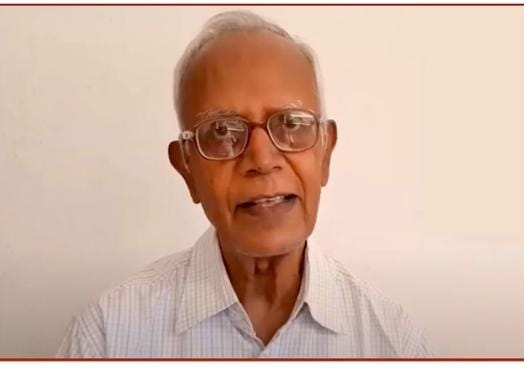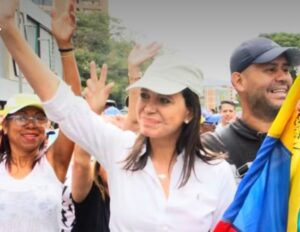From Barbed Wires to Hope: Stan Swamy’s Legacy Illuminates Migration’s Hidden Struggles
In the vibrant pulse of Mumbai’s Nariman Point, the Yashwantrao Chavan Centre became a beacon of defiance and remembrance on September 13, 2025. As evening shadows lengthened, a diverse assembly of activists, scholars, lawyers, students, and migrant rights advocates filled the hall, their presence a testament to the unyielding spirit of justice. The Stan Swamy Memorial Lecture, delivered virtually by Father Prem Xalxo SJ and chaired by veteran advocate Indira Jaising, delved into the poignant theme of “Migration for Livelihood: Hope Amidst Miseries.” This gathering was more than a discourse on human movement; it was a fierce reclamation of a silenced voice, honoring the late Jesuit priest Father Stan Swamy, whose life embodied the very struggles of the displaced and dispossessed.
Organised by a formidable coalition of over 55 civil society groups—including the People’s Union for Civil Liberties, Samanvaya, People’s Union for Democratic Rights, Karvaan-e-Mohabbat, and the International Solidarity for Academic Freedom in India—the event unfolded as an act of resistance.
Irfan Engineer, director of the Centre for Study of Society and Secularism, opened with a stirring introduction, framing the evening as a bulwark against the suppression of free expression and the intimidation of educational spaces. A screening of the documentary “A Caged Bird Can Still Sing” preceded the lecture, weaving archival footage of Swamy’s fieldwork with heartfelt interviews from those he championed, evoking the relational depth of his activism—always walking alongside communities rather than dictating from afar.
The Enduring Echo of Father Stan Swamy: A Life Devoted to the Voiceless
Father Stanislaus Lourduswamy, known as Stan Swamy, was born in 1937 in Tamil Nadu and emerged as one of India’s most steadfast guardians of indigenous rights.
Over five decades, this Jesuit priest immersed himself in the tribal heartlands of Jharkhand, founding Bagaicha, a social action center in Ranchi dedicated to empowering adivasi communities. His mission, deeply rooted in the Gospel’s imperative to uplift the oppressed, focused on land displacement, mining exploitation, and the enforcement of the Panchayats (Extension to Scheduled Areas) Act and the Forest Rights Act. Swamy’s research and advocacy laid bare how corporate greed and governmental policies eroded tribal self-governance, fueling cycles of poverty and forced relocation that tore families from ancestral soils.
Swamy’s work was hands-on and perilous: he documented police brutality, supported displaced villagers in legal battles, and amplified the voices of tribal women facing custodial abuses.
A relentless critic of draconian laws like the Unlawful Activities (Prevention) Act, he viewed them as tools to muzzle the marginalized. His commitment came at an unimaginable price.
In October 2020, at 83 and grappling with advanced Parkinson’s disease, Swamy was arrested by the National Investigation Agency in the Bhima Koregaon-Elgar Parishad case. Accused of Maoist affiliations and inciting violence—allegations decried by human rights groups as fabricated and politically motivated—he was slapped with UAPA charges that offered no respite.
Denied bail despite his frail health, Swamy languished in Taloja Jail, where he contracted COVID-19. His desperate requests for basic aids, like a sipper cup to steady his trembling hands, went unheeded, emblematic of systemic indifference.
On July 5, 2021, he suffered a cardiac arrest and passed away at Holy Family Hospital in Mumbai, still in judicial custody. What followed was an outpouring of global condemnation, with organizations labeling his death a judicial murder and a stark indictment of India’s weaponized anti-terror framework against dissenters. Swamy’s martyrdom transformed him into a rallying cry, galvanizing campaigns for the release of other Bhima Koregaon accused, many of whom endure prolonged incarceration.
Mihir Desai, Swamy’s former lawyer, captured this shift during the lecture: Swamy had evolved from a quiet advocate into a martyr and inexhaustible source of inspiration, his suffering a lens on the erosion of civil liberties.
Shadows of Suppression: The St. Xavier’s Cancellation and Civic Resolve
The road to this memorial was paved with contention, mirroring the very suppressions Swamy resisted. Initially set for August 9 at St. Xavier’s College, one of Mumbai’s esteemed institutions, the event was abruptly scrapped after a vehement letter from the Akhil Bharatiya Vidyarthi Parishad, the student arm of the Rashtriya Swayamsevak Sangh. The group branded Swamy a key figure in anti-national plots, invoking his Bhima Koregaon charges to demand the college honour “nationalist” icons instead. Citing “unavoidable circumstances,” administrators yielded, a decision that ignited outrage among academics and activists who saw it as a capitulation eroding the bedrock of academic freedom.
This episode underscored a chilling pattern: ideological incursions into campuses, where memorials are dismantled, tributes withdrawn, and debates stifled under the guise of patriotism. Engineer, in his remarks, excoriated Hindu nationalist outfits for wielding “muscle power” to curate curricula and events, shrinking spaces for critical inquiry. Yet, from this setback rose defiance. Relocated to the public Y.B. Chavan Centre and streamed online, the lecture transcended its origins, drawing a fuller house and virtual throng. As one organiser put it, this was no mere tribute—it was resistance incarnate, a refusal to let commemoration be policed into oblivion.
The controversy amplified the evening’s stakes, transforming a scholarly talk into a broader defense of the public sphere. Speakers warned of self-censorship’s creep among students and faculty, urging civil society to safeguard difficult histories as the oxygen of social movements.
Unveiling the Paradox: Migration’s Miseries and the Search for Dignity
Father Prem Xalxo, SJ, speaking from Rome as an associate lecturer at the Pontifical Gregorian University and a fellow Jesuit scholar in theological ethics and tribal studies, brought ethnographic depth to the migration narrative. His address portrayed internal displacement not as voluntary adventure but as a compulsion forged in rural despair—economic stagnation, forest rights’ gradual erosion, and policies blind to traditional livelihoods. In India, this tide sweeps nearly 453 million souls, about 37 percent of the populace, from tribal enclaves in Jharkhand, Odisha, and Chhattisgarh to urban fringes.
Fr. Xalxo zeroed in on the harrowing vulnerabilities of teenage tribal girls, compelled to flee villages for domestic drudgery in cities, where exploitation lurks in physical, sexual, and psychological guises. “They are forced to leave their villages due to the slow erosion of forest rights, ending up in exploitative situations,” he observed, his words echoing Swamy’s battles against land grabs that spawn such exoduses. Broader patterns emerged: from July 2020 to June 2021, migration rates hovered at 29 percent, drawn by urban job mirages and repelled by rural voids in opportunity and welfare.
The lecture laid bare the exodus’s toll—shoddy housing, wage theft, health perils, all worsened by the COVID-19 scourge that marooned millions sans succor. Returnees bear scars on family well-being and schooling, entrenching poverty’s grip. Mining and “development” projects, Swamy’s perennial foes, accelerate this, flouting the Forest Rights Act to strip adivasis of heritage.
Yet Fr. Xalxo wove in the paradox: migration as promise laced with punishment. It uproots from safety nets, hurling workers into gendered, racialized informal sectors—domestic toil, seasonal farms, brick kilns—devoid of safeguards. He called for a policy pivot: viewing migrants as agents deserving statutory shields, not footloose burdens.
Threads of Hope: Resilience, Reforms, and Relational Justice
Amid the gloom, Fr. Xalxo and his interlocutors kindled optimism, celebrating migrants’ tenacity—their remittances fuelling rural schools and clinics, their networks fostering mutual aid. Migration, he posited, mirrors humanity’s quest for dignity, a resilience Swamy embodied in his “walking with” the oppressed.
Jaising anchored this hope in history, tracing migration’s roots to colonial land heists. “Stan Swamy was enforcing the rights of the adivasis as enshrined in the Forest Rights Act, which had been snatched away starting with the British,” she asserted. Empowering tribals, she stressed, revives national honor, urging advocacy to reclaim terrains and stem distress flows.
Policy beacons flickered: the Mahatma Gandhi National Rural Employment Guarantee Act’s local jobs, though hampered by lapses; NGOs’ safe corridors with counseling and aid; skill hubs and portable benefits.
Fr. Xalxo’s theological lens invoked Catholic calls for compassionate ethics, demanding registration for domestics, autonomous migrant rights bodies, and evidence-based mapping for health, housing, and education provisioning.
Panellists hammered home urgencies: legal aid at transit hubs, parliamentary consensus to elevate migration from electoral footnote to justice cornerstone. Attendees—human rights sentinels, students—shared raw testimonies of bonded kiln labor and slum biases, forging communal resolve.
Mobilizing Memory: Calls for Release and Renewal
The podium pulsed with urgency. Desai traced Swamy’s afterlife influence, spurring worldwide assaults on repressive statutes. Jaising tied colonial undercurrents to today’s fights, insisting Swamy’s toil restored self-respect to adivasis long despoiled.
The close rang with pledges: freeing political prisoners, shielding dissent, centering migrants’ rights in law.
As virtual and in-person voices converged, the hall thrummed with shared conviction—that testimony births policy, and policy, dignity.
A Nation in Flux: Implications for India’s Democratic Soul
This lecture landed amid India’s seismic shifts: urbanization’s rush, inequality’s chasm, informal toil ensnaring 80 percent of workers. Climate furies—droughts, deluges—morph seasonal treks into exiles, demanding holistic retorts.
Swamy’s dream—a realm where adivasis flourish on native grounds—reverberates. Xalxo’s coda encapsulated it: “Migration is the story of hope amidst misery for countless families pushed to cities.” Beyond homage to a hero, the night sparked reforms—from fortifying forest edicts to migrant sanctuaries.
In democracy’s trial, such forums affirm that resistance begets hope.
As Chavan Centre’s lights faded, Swamy’s essence endured, beckoning all to amplify the faint songs of the displaced. In an age of erasure, this Mumbai vigil proved memory’s power to mobilize, ensuring the caged bird’s melody pierces the barbed wire.
Hasnain Naqvi is a former member of the history faculty at St. Xavier’s College, Mumbai






